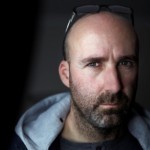by Simon Ellingworth
This is a simple blueprint that will enable anyone to master iPhonography and start producing amazing images. This blueprint is inspired by my friends always asking me why my iPhone pictures are so much better than theirs. Having given this some considerable thought here’s an article sharing my secrets and philosophy.
 As a Professional Photographer and recent runner up of the Mobile Photography Awards, I view photographic equipment as tools, all with different purposes and strengths. This philosophy extends to my iPhone and the apps I use. Did I mention that I also love simplicity?
As a Professional Photographer and recent runner up of the Mobile Photography Awards, I view photographic equipment as tools, all with different purposes and strengths. This philosophy extends to my iPhone and the apps I use. Did I mention that I also love simplicity?
I have one folder on my phone which I’ve called ‘Camera Bag’ and in it I have only 4 camera apps all with a different purpose.
(now I’ve jailbroken my phone there is only three and I can load my camera much quicker too)
Firstly and most importantly, I assess the whatever has caught my eye. It may be the graphical shape of something or the way the light is catching it. For some photographers, it’s colour. I tend to be that oddball photographer off on his own photographing something that apparently no one else can see if that makes you feel any better!
I think which tool (app) would capture that best and I start with that one. If I can’t capture or better still emphasize what originally caught my eye quite quickly, I’ll move on and try another app… never be afraid to experiment, never be afraid to fail.
Black & White (mono)
For black and white images, I use Hueless it’s wonderfully simple app and has the ability to slide the brightness (exposure) up and down so you can instantly see the results. When I do this I’m looking for that sweet spot, the one you’ll find just before the point of way too much!
I love, love, love it!
It works really well with strong light and produces images that remind me of my Leica M9.
Low Light and Night Time
NightCap is a great tool to capture pictures without flash and produces strong results long after other Iphoneographers have given up and put their phones away. To gather up the extra light takes a few moments longer than a normal shot, so you do need to try to keep your phone still with this one.
80% of everything else
First, a quick pain free technical bit:
If you look at something and squint (half close your eyes) then the mid tones disappear and you will be left with only the brightest (the highlights) and darkest (the low lights)
When you take a picture your camera will expose for the overall average and often the results are just that; average.
With Camera Awesome from SmugMug you can simply tap the screen on those highlights or lowlights (squint if you need to) and it will base the exposure on that spot (spot metering)…this will dramatically change the picture in front of your very eyes. Sometimes it’s worth experimenting on or around an area again to find that sweet spot.
This alone will change your photography and is the thrust of a recent article called: One simple trick to dramatically improve your photography.
The Final 20%
Finally there are some scenes where the difference between the highlights and lowlights (the dynamic range) is just too much for the iPhone (or any camera) to capture.
This is where HDR (High Dynamic Range) comes in; it involves taking multiple pictures of varying brightness and blends them automatically to give a single image.
Professionals do this manually like this:
You can simply turn on HDR in the native camera options and it will blend three images very well indeed and save both the HDR and the normal exposure in the camera roll. To illustrate a point; below is the normal exposure and then the HDR version:
Notice it manages to recover the details in both the highlights and low lights.
Although you’ll get some really quick and easy benefits from the standard camera app with HDR turned on, you can get much more from a dedicated HDR app such as Pro HDR quite simply, as shown below.
And that’s it really! Do try my 10 FREE simple lessons, experiment, and let me know how you get on!
~~~~
“Simple blueprint to enable anyone to master iPhonography” originally appeared on Lightism.co.uk and is reposted here with permission.
https://lightism.co.uk/blueprint






